(Our Own) Private Idaho
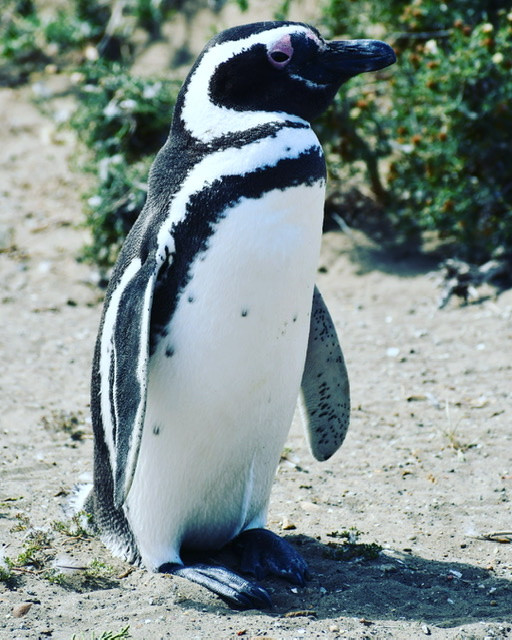
For those of you who don’t remember, ‘Private Idaho’ was a signature song of The B-52’s, a New Wave band, that came out about 1980. My Own Private Idaho was also the title of a strange movie from 1991, starring the late actor River Phoenix with Keanu Reeves, about the roadtrip adventures of a narcoleptic prostitute (no similarities here).
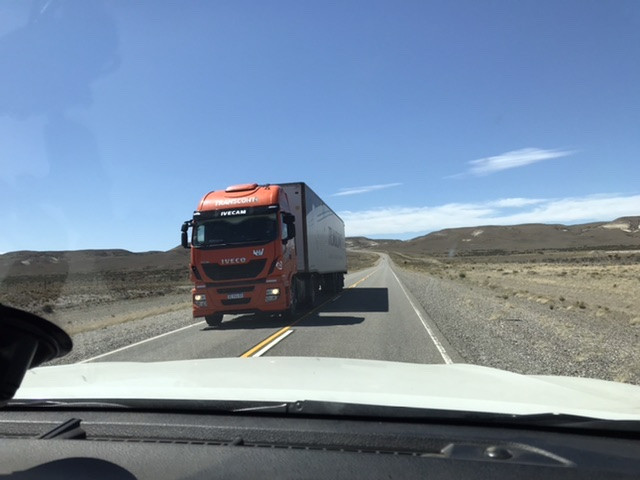
After sealing our decision to turn away from the island of Tierra del Fuego we headed north along Ruta 3, the main artery of tare & fare working its way along Argentinas eastern coast. This is a desolate section of the country, it’s miles and miles of flat, straight highway. There were lots of large semi trucks. The country is dry. The kilometers of low scrub broken only by numerous herds of guanaco and rhea, risking their lives to gather sustenance from the sparse, green grass along the highways edge. The guanacos could easily substitute for the antelope of the Idaho desert.
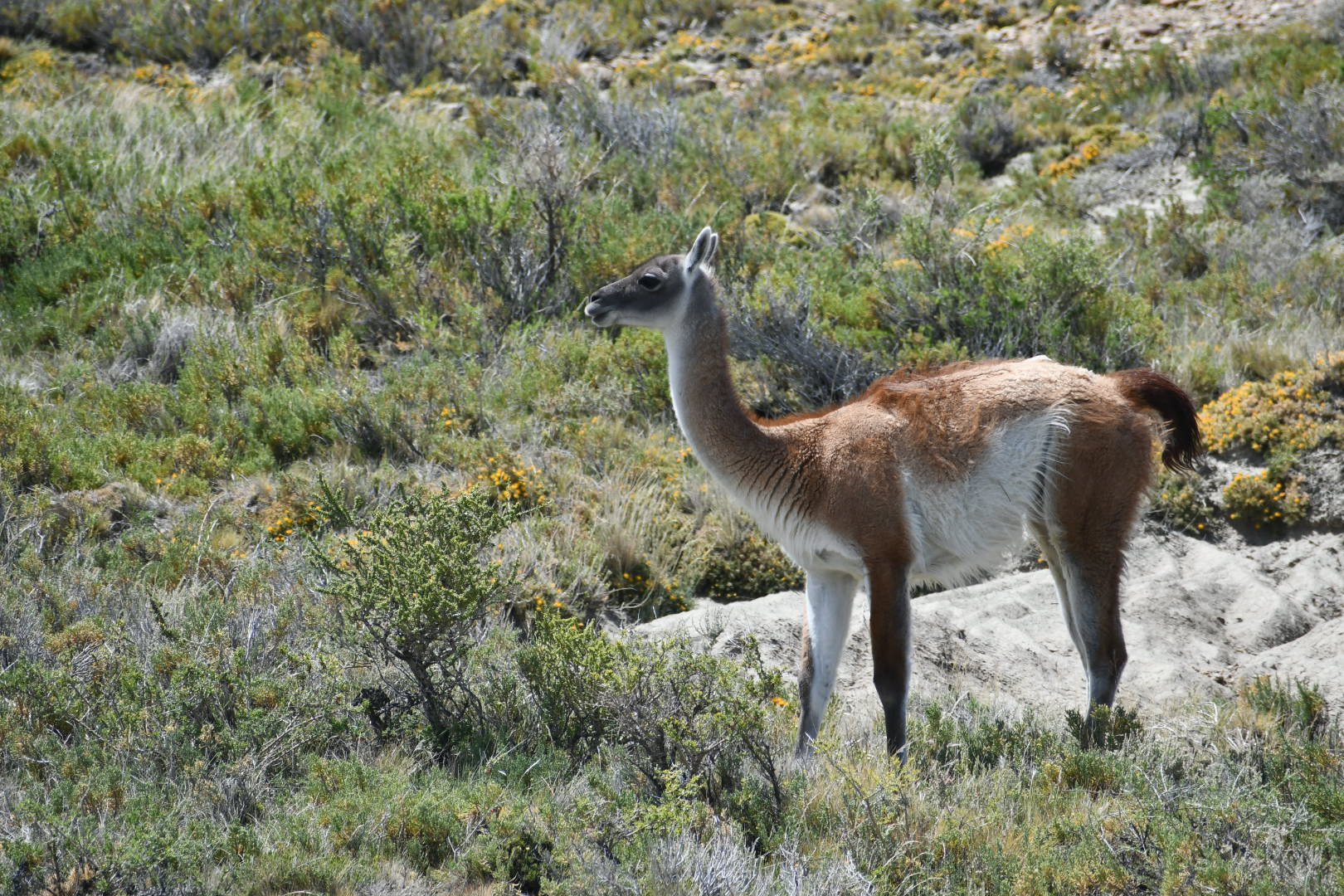
We were on our way to Parque Nacional de Monte Leon. It’s a recent addition to the countries national park system. It was an old, private estancia donated to the Argentine Nation with the help of a trust created by the late founder of North Face clothing, Doug Tompkins. From all indications, there would be next to nothing in the area regarding services but campsites were advertised at the park seashore.
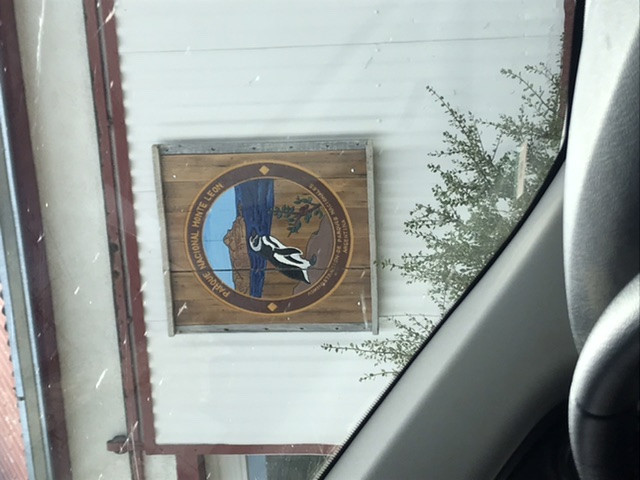
We arrived at the park entrance to find a simple wooden gate and a sign suggesting that we, for our safety, register the park office 5 km further down the road. The park administrative center was an old cluster of estancia buildings marked ‘Estancia Monte Leon’ in bold letters on the roof of the sheep-shearing shed. a lone ranger (sorry) came out to greet us. He explained the parks features are a substantial colony of Magellan Penguins, a point with a sea lion rookery and and island full of various species of pelagic Comorant found only in the Southern Hemisphere. The park was open until 7:30 at night and was closed to overnight camping (we were slowly, very slowly, figuring out that regardless what the guidebooks say, overnight camping in Argentinas National Parks is prohibited) That last statement was somewhat of a letdown. We asked the ranger where we could camp and he suggested an estancia directly across the road from the park entrance, 5 km back from whence we came. He then gave us a small leaflet advertisement. The estancia offered lodging, meals and camping. It also billed itself as a fishing lodge. Interesting.
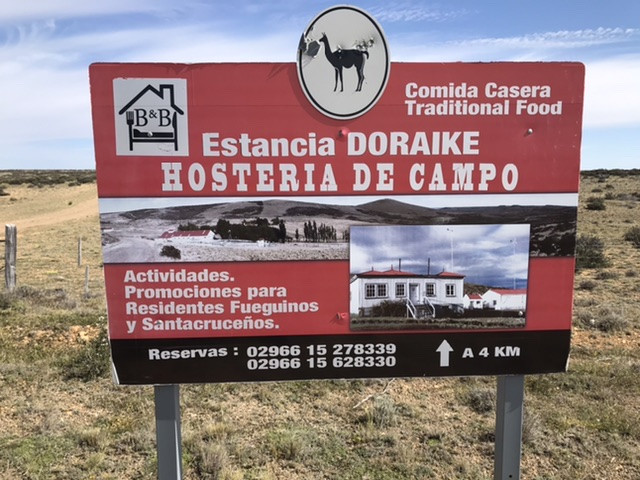
Traveling back to the wooden park gate, indeed, across from it was a gate with a sign advertising Estancia Dorike, 4km. Pulling into the estancia yard it looked very empty and old, yet inviting. We were greeted by a young lady, named Angelica, who told us yes, they did have camping and she escorted us away from the hostal building down by where the estancia employees lived. We were given a small flat of grass next to the barns and shown a modest but clean & adequate bathroom to use.
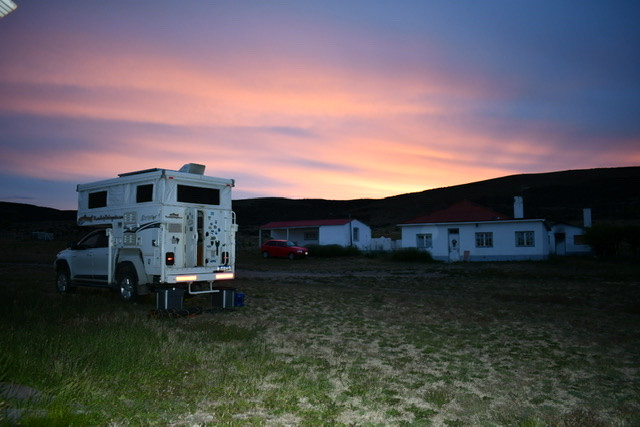
Our initial plan was to stay one night and see the National Park on our way out the next day.
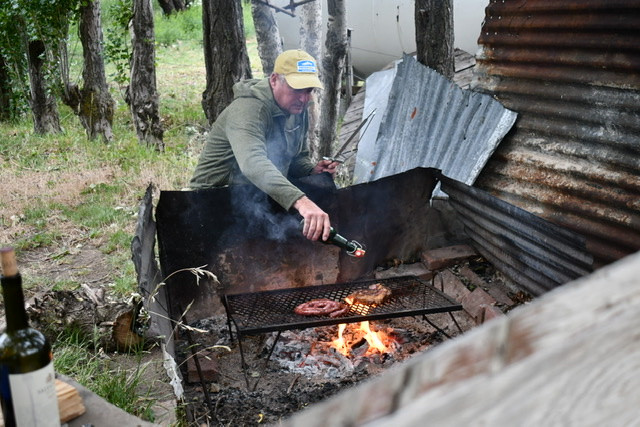
As we grilled meat on the estancia asado, we remembered we were at a fishing lodge and we picked up the leaflet. Just out our back door was a rustic, carved wooden sign saying ‘El Rio 5 km’ with an arrow. Too much to resist. We thought, perhaps, we’d stay through New Year’s eve and inquire about a day of fishing.
Knocking at the back door of the hostel, we met the lady of the estancia, a woman of about 55 with a kind face and steady gaze. She explained that there were Steelhead and Chinook in the river, but it was very early in the season. Figuring we could increase our odds of catching a fish, we asked if there was a guide available. She said she would call and let us know in about 30 minutes. Angelica returned to our camper door in short order and explained yes, a guide was available today only. The cost was $100 for a full day of fishing. We said yes.
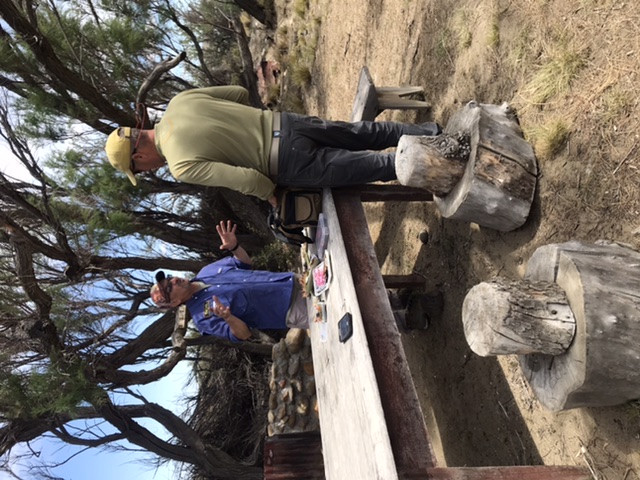
About an hour later a man of about 60 years old pulled up to the camper in his pick up truck. He said his name was Hugo Maldonado, and he would be our guide for the day. Hugo repeated the same line that we were a bit early for the steelhead and brown runs but we might catch a chinook salmon. We acknowledged “que sera, sera” (what will be, will be), we were there for the experience and we would take our chances.
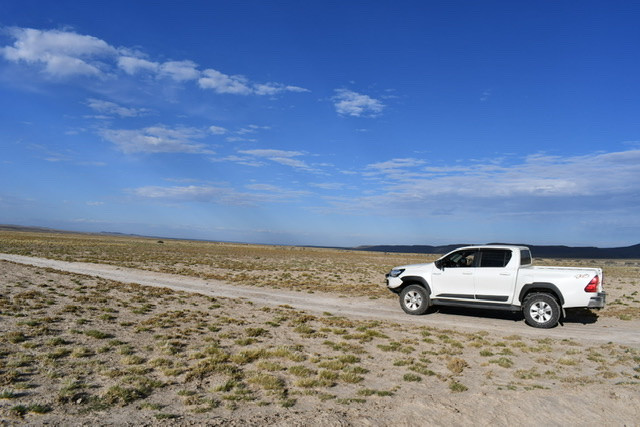
We told Hugo we had all of our own equipment and lunch. In preparation for our two days of adventure we had offloaded the camper and had the truck loaded & ready. We followed Hugo to the river, winding down the canyon and across trails through the estancia. A remarkable amount of guanacos and rheas flushed along the way.
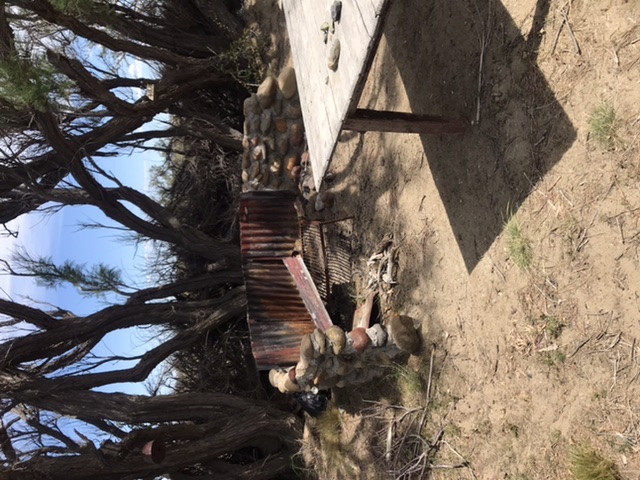
We reached a bend in the river, El Rio Santa Cruz, were there were a couple of old concrete foundations and a quincho (a barbecue site), ensconced within a circle of tamarisks and willows.
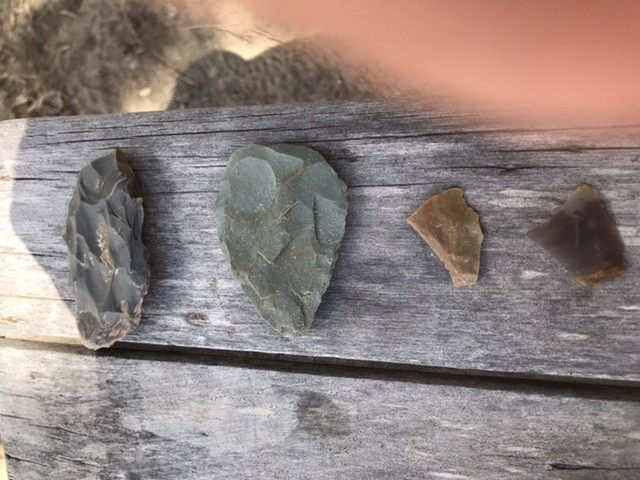
The old quincho had an interesting assortment of artifacts, including some very old handmade furniture, an assortment of fossils and an assortment of stone shards.
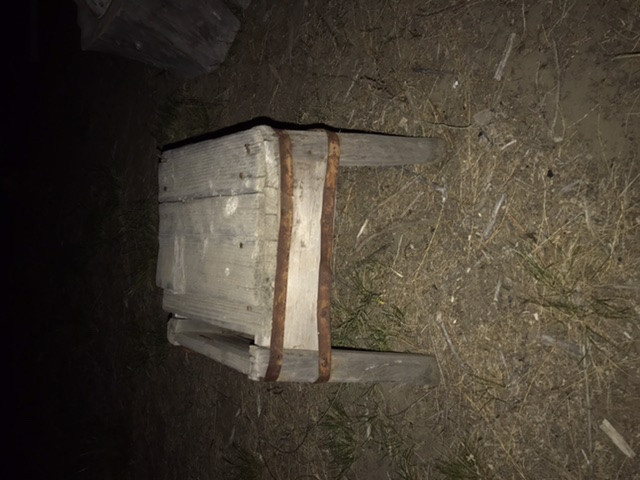
Just below the quincho, where the river had eroded the bank, was the site where ancient Indians had gathered to make stone tools. Broken rocks, chips and pressured flaked stones lay everywhere.
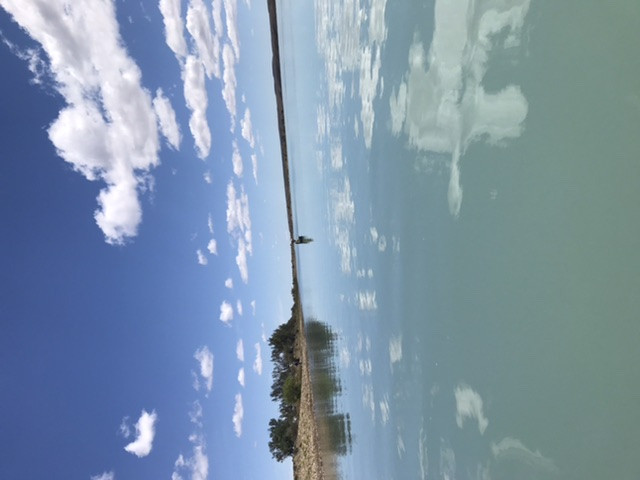
The Santa Cruz runs from the glaciers upriver at Lago Argentina and retain the milky blue color of the glacier dust. We had a rare day with light winds. After stringing up our eight-weight fly rods Hugo tied on a couple of his favorite , hand-tied flies and let us to a current seam where we might hook a chinook salmon.
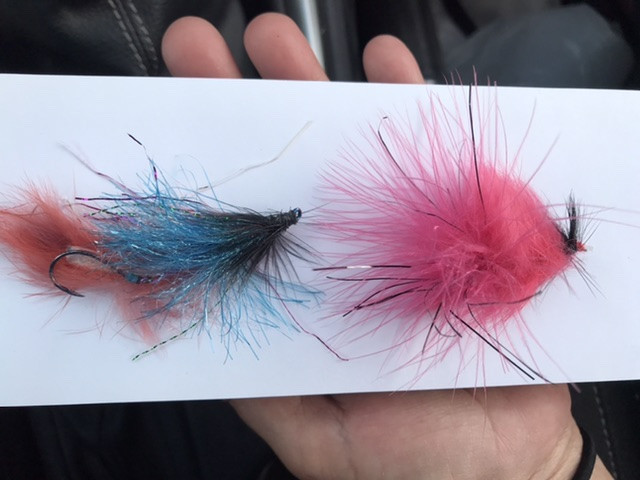
While a couple of salmon did roll, we hooked nothing. After taking a break to eat lunch, and look at photos of HUGE Steelhead and Sea-Run Browns caught February and March at that exact spot, Hugo offered to set up his two-handed Spey rod on my behalf. I told him I hadn’t cast one in 30 years and would love the opportunity.
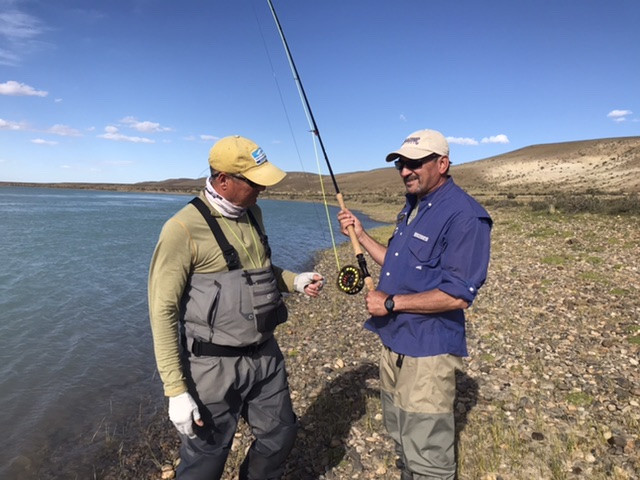
The rod had to be 14 foot. It was a monster. Hugo gave me a demonstration (in Spanish) and for about a half-hour coached me (in Spanish). By then we had gotten one another’s sense of humor and he kept screaming; “no, gringo, no!” while hurling instruction at me (in rapid Spanish).
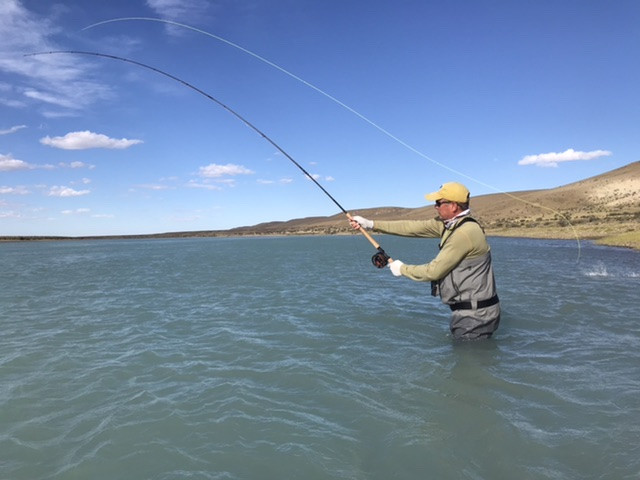
The afternoon finished with nary-a-tug on our lines. Lynnette nor I really didn’t care; we laughed a lot, we’d made a new friend and I learned to use a Spey rod. Lynnette enjoyed the hell out of watching me be the subject of intense scrutiny and instruction for a couple hours. As we said goodbye after exchanging our contact information, Hugo refused the money due as a guide fee for the day. He said ‘just come back sometime’. We stuffed his money, and a tip, into his hands & told him it was for gas.
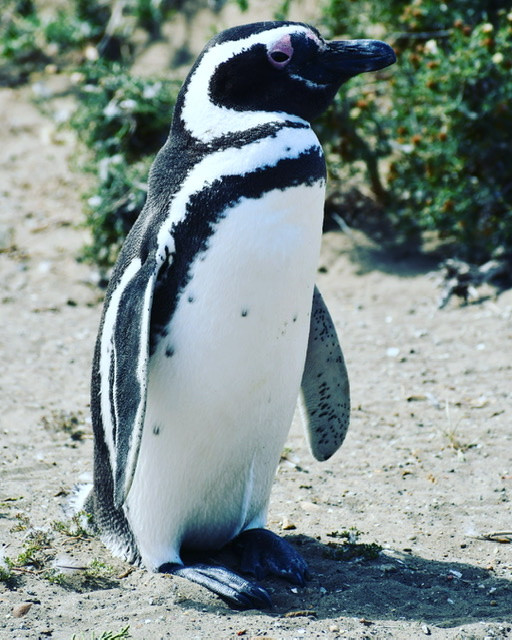
We woke the next day with great anticipation to see the national Park. We drove up to the wooden gate we’d seen a couple days previous and it appeared to be chained & locked. Upon closer inspection it was held by a false link, which we unlatched. We drove through and for several hours it seemed we had the whole park to ourselves; driving down to the beach and walking the 2 km path to see the Magellan Penguin colony.
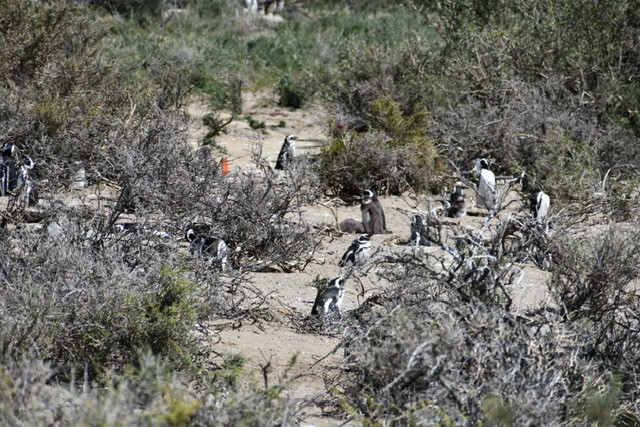
We were expecting to see a crowded shelf of penguins clinging to the oceans edge beneath the Cape. What we did see was penguins, several hundred meters deep, interspersed within a 1 to 2 m territorial-basis per nest, stretched as far as one could see in both directions from the viewing platform.
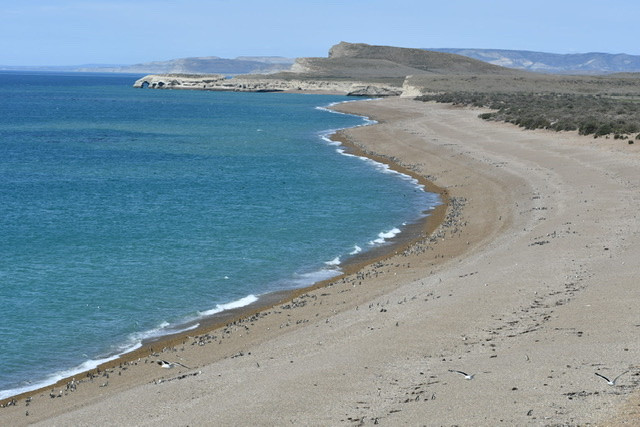
There were penguins under the viewing platform. There were penguins lining the trail. Penguins walking inland. Penguins walking to the sea. Penguins, everywhere.
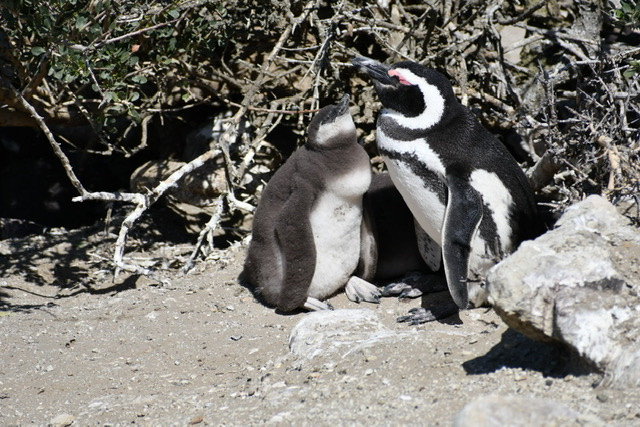
We did not need to leave the trail to get close-up photos, as the ones that have chosen to nest along side the trail were quite approachable and seemingly unafraid.
Educational trail signs told us that the last penguins to arrive at the Cape had to pick nesting sites far inland and those were considerably more exposed to predators such as pumas, foxes and predatory birds. The outer fringes of the colony was littered with dead birds.
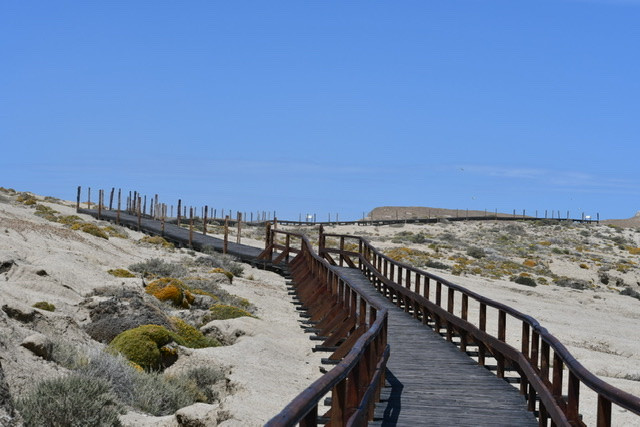
We hiked back to the truck to make our next stop, Punte Monte Leon, which means “Mount Lion Point.” The Point resembles a lion in repose. It held a large sea lion rookery.
The wind at the point was ferocious. We could hardly make our way along the elevated walking trail.
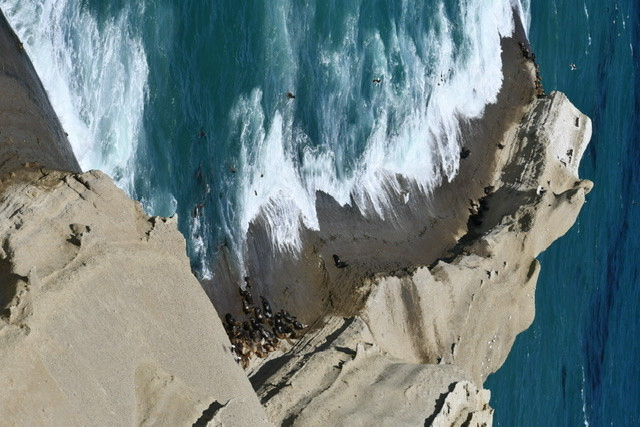
While at the point we were sandblasted by particles of sand and dust. Holding the cameras to get pictures was near impossible. While we love watching the antics of marine mammals, it was too uncomfortable to remain. We made our way to the third stop in the park, a bird island holding thousands of sea birds. Again, the wind was blowing from the Atlantic at a ferocious velocity. My eyes were scratched by sand so we didn’t stay long from the truck nor get any photos.
The fourth and final destination along the Park Road was a beautiful, pebble beach that was, again, being scoured by the wind & sand. We looked at the campsite established there, closed to overnight camping, being sandblasted and thanked our stars we were not able to camp there.
We returned to the estancia, where the wind was strong but greatly reduced. After flushing my eyes with water and taking a nap, we woke to fulfill our plan: to return to the riverside quincho and cheer-in the New Year barbecuing meat by the Rio Santa Cruz.
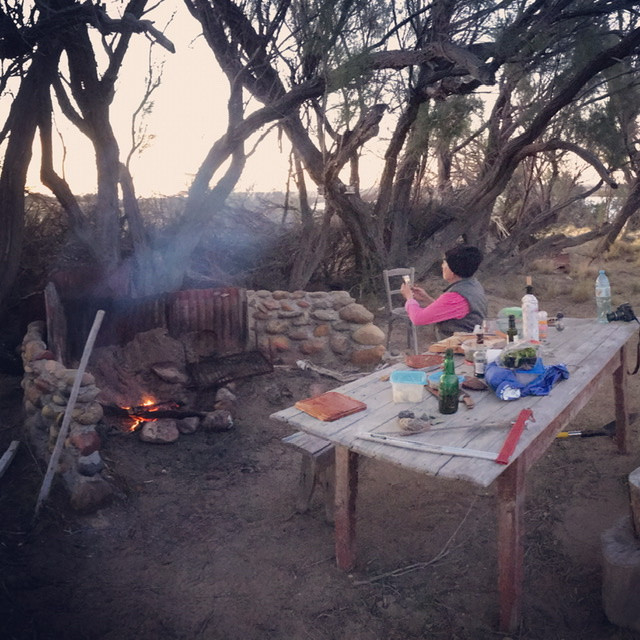
We retraced our steps on the GPS taken the day before and easily found the spot. After cutting dead wood into logs & splitting them we cleaned up the quincho fire pit and grilled meat. we drank a beautiful bottle of wine purchased at a ridiculously low price at our last grocery stop in El Calafate.
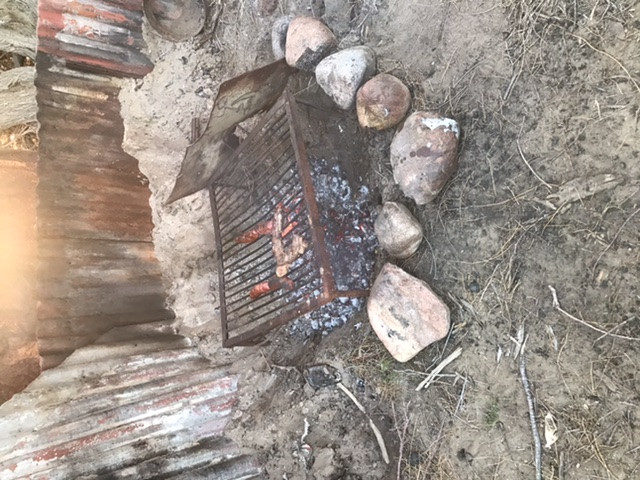
As the sun set and the wind died, the only sounds were the clucking of the rheas and whinnies of the guanaco herds in the nearby hills. Lynnette and I both proclaimed it was absolutely perfect; the best New Years Eve, ever.
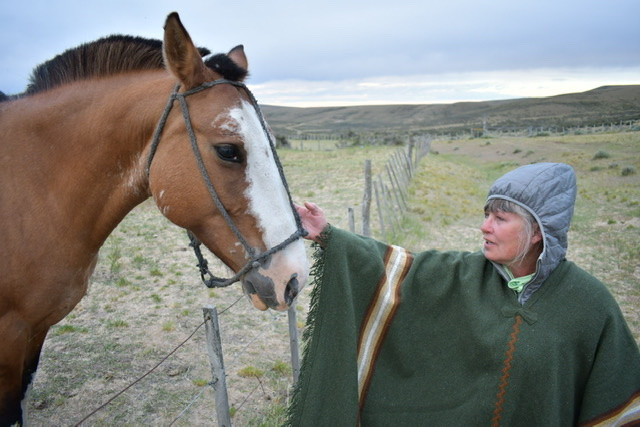
The bill for three days camping at the estancia: 1200 pesos. Less than $20, and it felt like it was all ours.
I had determined a year ago to take this trip to mark my 60th birthday. As the clock clicked over at midnight, it was New Year’s Day. I was 60 years-old plus two days.
